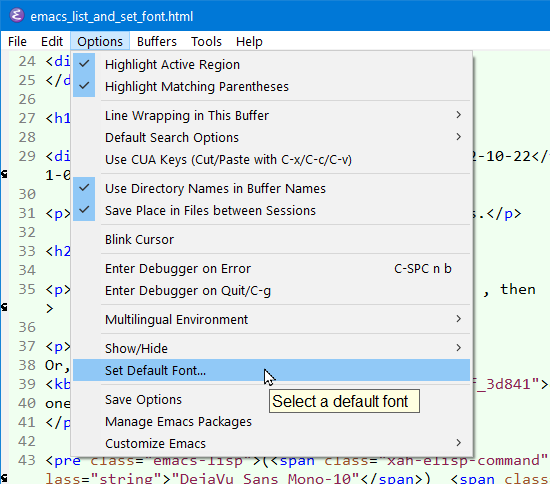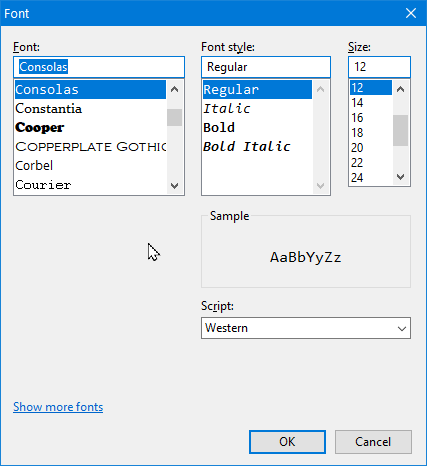Emacs Init: Setup Font
This page shows you how to set font for emacs in init file.
Set Font to Init File, via Graphical User Interface Menu
Chose the menu:
- menu [Options ▸ Set Default Font…]
- menu [Options ▸ Save Options].
font setting is saved to the Emacs Init File in the custom-set-variables section. 〔see Emacs Init: M-x customize〕


Set Font in Init File
put this in your Emacs Init File:
;; set overall font (set-frame-font (cond ((member "Cascadia Mono-16" (font-family-list)) "Cascadia Mono") ((member "Consolas-16" (font-family-list)) "Consolas") ((member "Menlo-16" (font-family-list)) "Menlo") ((member "DejaVu Sans Mono-16" (font-family-list)) "DejaVu Sans Mono") (t nil)) t t)
List available fonts
(print (font-family-list))
〔see Evaluate Emacs Lisp Code〕
Check if a font exist
;; returns true if Symbola exists (member "Symbola" (font-family-list))
Reference
Emacs, font setup
- Emacs: Change Font Size (For Current Session)
- Emacs: Find Character Name, Font, Position, Codepoint, Encoding, Etc
- Best Unicode Fonts for Coders
- Emacs: Toggle Monospace / Proportional Font
- Emacs Init: Setup Font
- Emacs Init: Font for Unicode Symbols
- Emacs Init: Font for Emoji
- Emacs Init: Font for Chinese
- Emacs Init: Minibuffer Font Size
- Emacs Init: Variable Pitch Mode (Proportional Font)
- Emacs Init: Change Default Face (Font)
- Emacs Init: Display Lambda as λ
- Emacs: Cycle Fonts by Command 📜